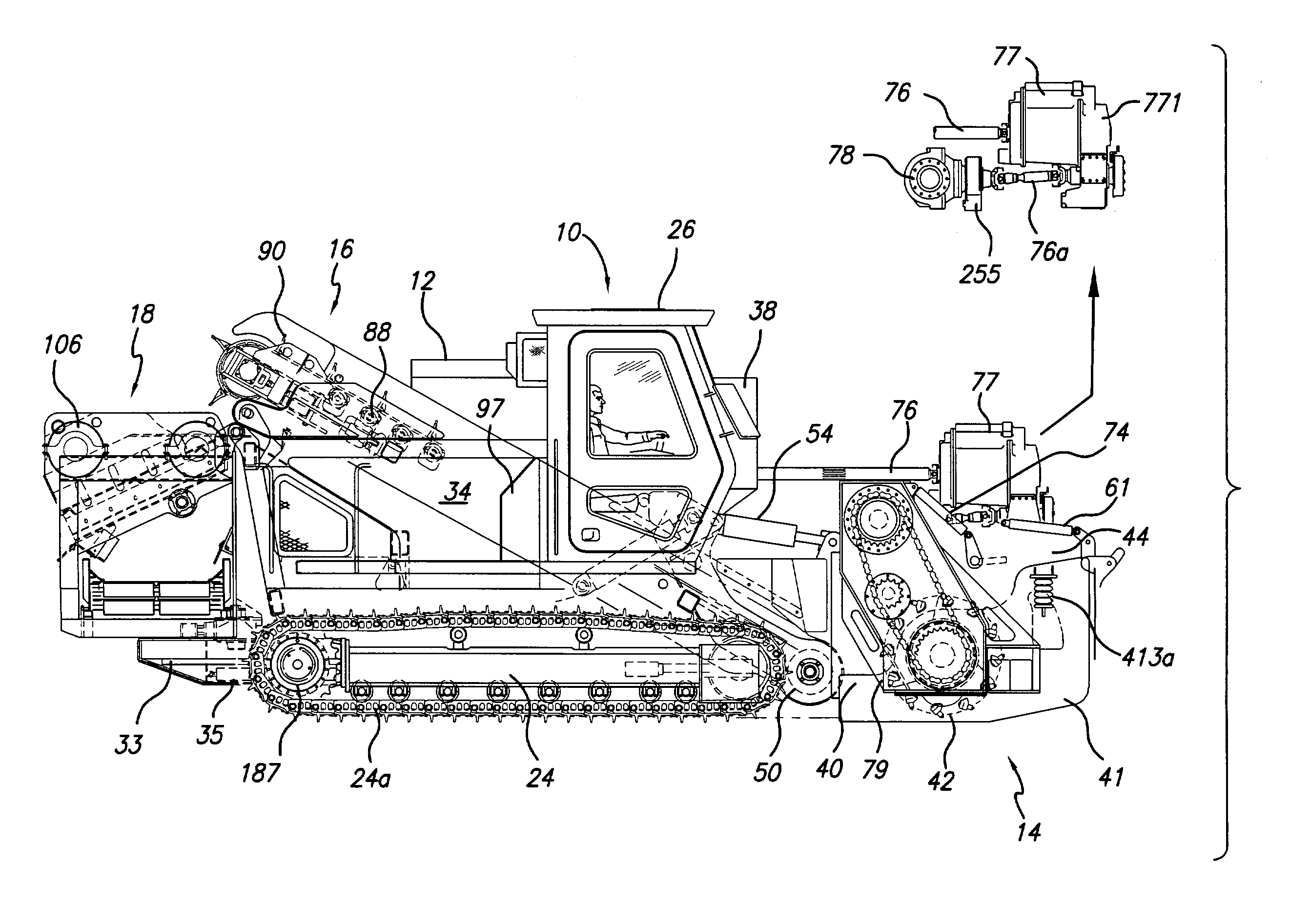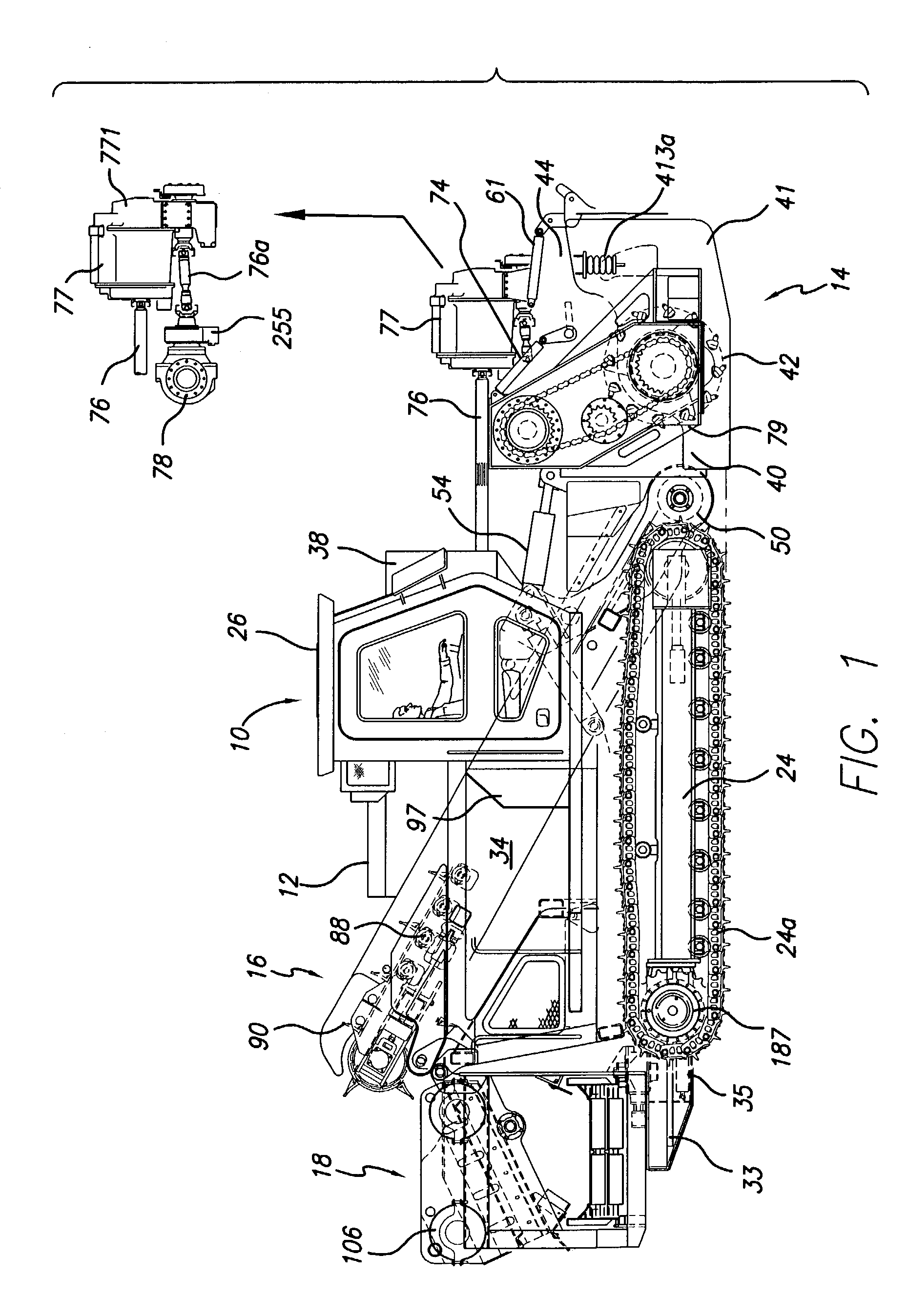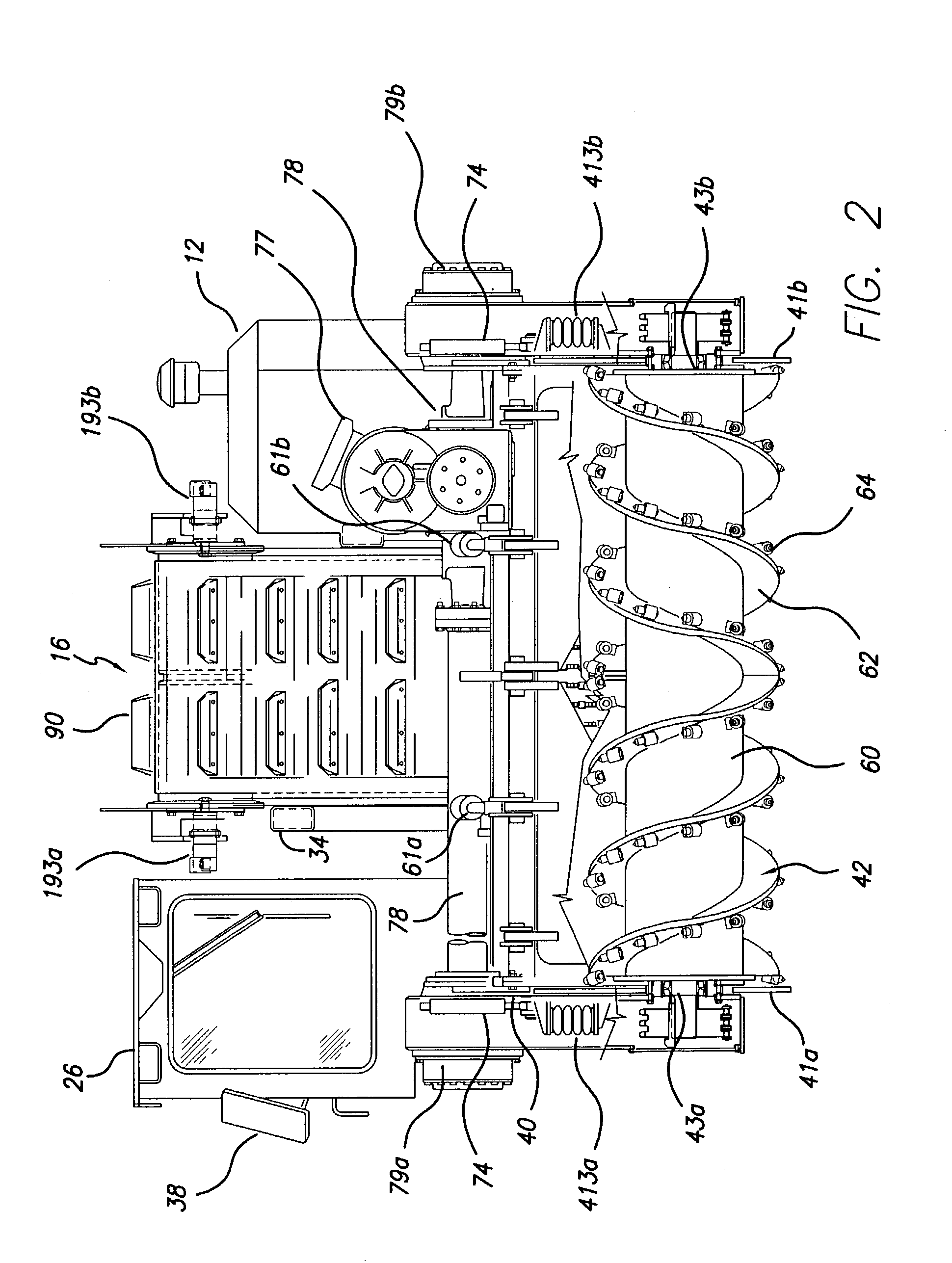Padding machine and method of use
a technology of adding machine and a coating machine, which is applied in the direction of mechanical machines/dredgers, grain treatment, mechanical apparatus, etc., can solve the problems of destroying the spoil back into the trench, destroying the pipe or its protective cover or coating, and long expanses of pipe underground, etc., to achieve the effect of improving the operability of the device and operating effectively
- Summary
- Abstract
- Description
- Claims
- Application Information
AI Technical Summary
Benefits of technology
Problems solved by technology
Method used
Image
Examples
Embodiment Construction
[0062]As best seen in FIG. 1, the padding machine hereinafter described has the following major components: the vehicle 10, the engine 12, the front digging auger and frame assembly 14, the up conveyor assembly 16, the screening assembly 18, and the cross-pass conveyor assembly 20.
[0063]The vehicle 10 comprises a main frame 22, a track assembly 24 having tracks 24a and 24b, and an operator's cab 26. As best seen in FIGS. 4 and 17, the main frame 22 comprises track cross members 30 having a central pivot point 32 and a box frame 34 that is pivotally attached to the cross members 30 at pivot point 32, and which will provide the main support structure for the other components (such as the up conveyor and screening assemblies). A pair of front and back hydraulic arms 36a and b are attached between the box frame 34 and the cross members 30 and act to maintain the box frame 34 (and hence the component parts attached thereto) level as the vehicle traverses slopes and as the tracks independ...
PUM
 Login to View More
Login to View More Abstract
Description
Claims
Application Information
 Login to View More
Login to View More - R&D
- Intellectual Property
- Life Sciences
- Materials
- Tech Scout
- Unparalleled Data Quality
- Higher Quality Content
- 60% Fewer Hallucinations
Browse by: Latest US Patents, China's latest patents, Technical Efficacy Thesaurus, Application Domain, Technology Topic, Popular Technical Reports.
© 2025 PatSnap. All rights reserved.Legal|Privacy policy|Modern Slavery Act Transparency Statement|Sitemap|About US| Contact US: help@patsnap.com



